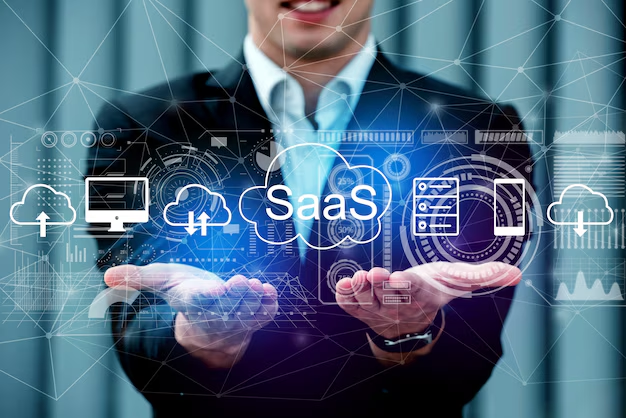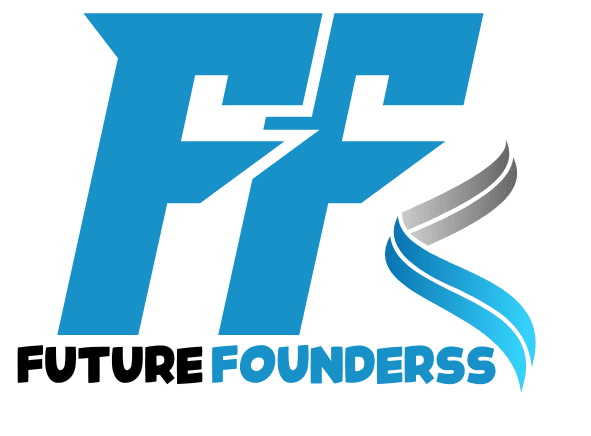In an age where digital transformation is paramount, businesses and individuals alike are turning to innovative solutions to streamline operations and enhance productivity. One such groundbreaking advancement is Software as a Service (SaaS). As we navigate through 2024, understanding what SaaS entails and its transformative potential is crucial. This comprehensive guide will delve into the essence of SaaS, exploring its benefits, challenges, and future trends, while providing a human touch to make the technical concepts more relatable.
Understanding SaaS: A Brief Overview

Software as a Service (SaaS) is a cloud-based delivery model where software applications are provided over the internet. Unlike traditional software that requires installation on local devices, SaaS operates on a subscription basis, allowing users to access the software through a web browser. This model eliminates the need for hefty upfront investments in hardware and software, making it a cost-effective and flexible solution for businesses of all sizes.
The Core Features of SaaS
- Subscription-Based Access: Instead of purchasing software outright, users subscribe to SaaS applications, typically on a monthly or annual basis. This model offers financial flexibility and lowers the initial cost barrier.
- Accessibility and Mobility: SaaS applications are accessible from any device with an internet connection. This feature enhances mobility and allows users to work from virtually anywhere, fostering a more flexible work environment.
- Automatic Updates: SaaS providers handle software updates and maintenance, ensuring that users always have access to the latest features and security patches without manual intervention.
- Scalability: SaaS solutions can easily scale to accommodate growing user needs. Businesses can adjust their subscription plans or add new features as required, providing a dynamic approach to software management.
- Multi-Tenancy: SaaS applications often serve multiple clients from a single instance of the software. This shared infrastructure helps reduce costs and enables efficient resource utilization.
Benefits of SaaS
The advantages of SaaS are substantial, contributing to its rapid adoption across various industries. Here’s a closer look at some of the primary benefits:
1. Cost Efficiency
One of the most compelling reasons for adopting SaaS is its cost-effectiveness. Traditional software often requires significant upfront investments for licenses, hardware, and ongoing maintenance. SaaS, on the other hand, operates on a subscription model, which spreads costs over time and typically includes updates and support. This pay-as-you-go approach is particularly beneficial for small to medium-sized enterprises (SMEs) with limited budgets.
2. Ease of Use and Implementation
SaaS applications are designed to be user-friendly and require minimal setup. Most SaaS providers offer intuitive interfaces and comprehensive onboarding processes, making it easier for users to get started. This ease of use is complemented by the minimal hardware requirements, as software is accessed via a web browser.
3. Automatic Updates and Maintenance
Keeping software up to date can be a cumbersome task, often requiring manual downloads and installations. With SaaS, updates and maintenance are handled by the service provider. This ensures that users always have access to the latest features, improvements, and security patches without additional effort.
4. Enhanced Collaboration
SaaS applications often include collaborative features that facilitate teamwork and communication. Tools like shared workspaces, real-time document editing, and integrated messaging systems enable teams to work together seamlessly, regardless of their physical location.
5. Scalability and Flexibility
SaaS solutions can easily scale to accommodate changing business needs. Whether a company is growing rapidly or experiencing seasonal fluctuations, SaaS allows for quick adjustments in subscription plans or feature sets. This flexibility ensures that businesses can adapt to evolving requirements without the need for extensive reconfiguration.
6. Data Security and Compliance
Reputable SaaS providers invest heavily in security measures to protect user data. They often implement advanced encryption, regular security audits, and compliance with industry standards and regulations. This level of security is often more robust than what many businesses can achieve on their own.
7. Global Reach
SaaS solutions enable businesses to operate on a global scale without the need for physical infrastructure in multiple locations. This global reach allows companies to serve international clients efficiently and expand their market presence without significant additional investments.
8. Disaster Recovery and Business Continuity
Many SaaS providers offer robust disaster recovery and business continuity features. Data is typically backed up regularly, and the service provider ensures that operations can continue smoothly even in the event of a failure or disaster. This added layer of security is crucial for maintaining business operations and minimizing downtime.
Challenges and Considerations

While SaaS offers numerous advantages, it is not without its challenges. Understanding these potential issues can help businesses make informed decisions and mitigate risks effectively.
1. Data Privacy and Control
Storing sensitive data on external servers raises concerns about data privacy and control. Businesses need to ensure that their SaaS providers have stringent security measures and comply with data protection regulations. It’s crucial to review service agreements and understand the provider’s data handling practices.
2. Dependence on Internet Connectivity
Since SaaS applications are accessed via the internet, a reliable connection is essential for uninterrupted access. Businesses in areas with poor internet infrastructure may experience connectivity issues that can impact productivity.
3. Vendor Lock-In
Choosing a SaaS provider often means committing to their platform and tools. Switching providers or migrating data to a new system can be complex and costly. It’s important to evaluate the long-term viability of a provider and consider the ease of data export and integration with other systems.
4. Customization Limitations
While SaaS solutions offer many features, they may not always align perfectly with specific business needs. Customization options can be limited compared to on-premises software. Businesses should assess whether the available features and configurations meet their requirements.
5. Performance and Reliability
The performance of SaaS applications is dependent on the service provider’s infrastructure. Users may experience performance issues if the provider’s servers encounter problems or if there are high volumes of traffic. Evaluating the provider’s track record and service level agreements (SLAs) can help address these concerns.
6. Compliance and Legal Issues
Depending on the nature of the business and the industry, there may be specific compliance and legal requirements related to data handling and privacy. Ensuring that the SaaS provider meets these requirements is essential to avoid legal complications and maintain compliance.
Trends in SaaS for 2024
As technology continues to evolve, SaaS is also adapting to new trends and innovations. Staying informed about these developments can help businesses leverage SaaS effectively.
1. Artificial Intelligence (AI) Integration
AI and machine learning are increasingly being integrated into SaaS applications. These technologies enhance functionality by providing advanced analytics, automating tasks, and delivering personalized user experiences. From chatbots to predictive analytics, AI is set to revolutionize SaaS offerings.
AI-Powered Insights: SaaS applications with AI capabilities can analyze vast amounts of data to offer actionable insights, helping businesses make more informed decisions. Predictive analytics, for example, can forecast future trends and customer behaviors, enabling proactive strategies.
Automated Processes: Automation through AI can streamline routine tasks, such as data entry and customer service interactions. This reduces the burden on employees and increases operational efficiency.
2. Enhanced Security Measures
With growing concerns about data breaches and cyber threats, SaaS providers are prioritizing enhanced security measures. Multi-factor authentication, advanced encryption, and continuous monitoring are becoming standard features to safeguard user data.
Zero Trust Architecture: The Zero Trust model, which assumes that threats could be internal or external, is gaining traction. SaaS providers are adopting this approach to enhance security by continuously verifying user identities and device health.
Regulatory Compliance: SaaS providers are increasingly focusing on compliance with global regulations such as GDPR, CCPA, and HIPAA. This ensures that user data is handled according to stringent legal standards.
3. Vertical-Specific SaaS Solutions
There is a growing trend towards vertical-specific SaaS solutions tailored to the needs of particular industries. Whether it’s healthcare, finance, or retail, specialized SaaS applications offer targeted features and compliance with industry regulations.
Healthcare SaaS: In the healthcare sector, SaaS solutions are being developed for electronic health records (EHR), telemedicine, and patient management. These solutions improve patient care and streamline administrative processes.
Financial SaaS: Financial institutions are leveraging SaaS for functions such as risk management, compliance, and financial planning. Specialized solutions address industry-specific challenges and regulatory requirements.
4. Integration with IoT Devices
The Internet of Things (IoT) is expanding the possibilities for SaaS applications. Integration with IoT devices enables real-time data collection and analysis, offering new insights and automation opportunities for businesses.
Smart Manufacturing: In manufacturing, SaaS platforms integrated with IoT sensors can monitor equipment performance, predict maintenance needs, and optimize production processes.
Smart Cities: SaaS solutions are being used to manage smart city initiatives, such as traffic management and energy consumption, by integrating data from various IoT devices.
5. Remote Work Enablement
As remote work continues to be a prevalent trend, SaaS applications are evolving to support remote collaboration and productivity. Enhanced features for virtual teamwork, project management, and communication are becoming increasingly important.
Virtual Collaboration Tools: SaaS applications designed for remote work include video conferencing, project management, and collaborative document editing tools. These features facilitate seamless communication and coordination among remote teams.
Employee Productivity Monitoring: Some SaaS solutions offer features to monitor employee productivity and manage workloads. These tools help ensure that remote teams stay on track and meet their objectives.
Case Studies: SaaS in Action

To illustrate the impact of SaaS, let’s explore a few real-world examples of how SaaS is transforming various industries and improving business operations.
Case Study 1: Salesforce in Customer Relationship Management
Salesforce, a leading SaaS provider, has revolutionized customer relationship management (CRM) with its cloud-based platform. By offering a comprehensive suite of CRM tools, Salesforce enables businesses to manage customer interactions, sales processes, and marketing campaigns more effectively.
Key Benefits:
- Centralized Customer Data: Salesforce consolidates customer information into a single platform, providing a 360-degree view of customer interactions and history.
- Automation and Analytics: The platform offers automated workflows and advanced analytics, helping businesses streamline operations and gain insights into customer behavior.
- Customization and Integration: Salesforce’s ecosystem allows for extensive customization and integration with other business applications, ensuring that it meets the specific needs of different industries.
Case Study 2: Slack for Team Collaboration
Slack has become synonymous with modern team collaboration, providing a SaaS solution that enhances communication and project management. Its user-friendly interface and integration with numerous third-party applications make it a popular choice for teams of all sizes.
Key Benefits:
- Real-Time Messaging: Slack’s chat-based interface facilitates real-time communication, reducing the reliance on email and improving team responsiveness.
- Integration Capabilities: The platform integrates with various tools such as Google Drive, Trello, and Zoom, enabling seamless workflow and data sharing.
- Customizable Notifications: Users can customize notification settings to stay informed about important updates without being overwhelmed by constant alerts.
Case Study 3: Zoom for Video Conferencing
Zoom has become a household name in the realm of video conferencing, particularly during the pandemic when remote work surged. Its SaaS model allows users to conduct virtual meetings, webinars, and collaboration sessions with ease.
Key Benefits:
- High-Quality Video and Audio: Zoom offers reliable and high-quality video and audio, essential for clear communication in virtual meetings.
- Scalability: The platform supports a wide range of meeting sizes, from small team meetings to large-scale webinars, making it suitable for various organizational needs.
- User-Friendly Interface: Zoom’s intuitive interface simplifies scheduling, joining, and managing meetings, ensuring a smooth user experience.
The Future of SaaS: What Lies Ahead

As we look to the future, several emerging trends and technologies are poised to shape the evolution of SaaS. Staying ahead of these trends will be crucial for businesses looking to maximize the benefits of SaaS and stay competitive in a rapidly changing landscape.
**1. Emergence of Hyper-Automation
Hyper-automation refers to the use of advanced technologies such as AI, machine learning, and robotic process automation (RPA) to automate complex business processes. In the SaaS realm, hyper-automation is expected to drive further efficiency and innovation.
Implications for SaaS:
- Enhanced Process Automation: SaaS platforms will increasingly incorporate hyper-automation to streamline end-to-end processes, reducing manual intervention and improving accuracy.
- Intelligent Insights: AI-driven analytics will provide deeper insights into business operations, enabling more informed decision-making and strategic planning.
**2. Expansion of Edge Computing
Edge computing involves processing data closer to its source rather than relying solely on centralized cloud servers. As IoT devices proliferate, edge computing will become increasingly important for managing and analyzing data in real-time.
Implications for SaaS:
- Reduced Latency: SaaS applications will leverage edge computing to deliver faster responses and improved performance, particularly in environments with high data volumes or latency-sensitive applications.
- Enhanced Data Security: Processing data at the edge can enhance security by minimizing the need to transmit sensitive information over networks.
**3. Increased Focus on Sustainability
Sustainability is becoming a key consideration for businesses across all sectors. SaaS providers are increasingly adopting environmentally friendly practices and offering solutions that support sustainability goals.
Implications for SaaS:
- Green Data Centers: SaaS providers are investing in energy-efficient data centers and renewable energy sources to reduce their environmental footprint.
- Sustainable Practices: SaaS solutions that support sustainability, such as tools for tracking and managing carbon emissions, are becoming more prevalent.
**4. Growth of Industry-Specific SaaS Solutions
The demand for industry-specific SaaS solutions will continue to grow as businesses seek tailored tools that address their unique challenges and requirements.
Implications for SaaS:
- Specialized Features: Industry-specific SaaS solutions will offer features and functionalities designed to meet the specific needs of sectors such as healthcare, finance, and manufacturing.
- Regulatory Compliance: These solutions will also focus on ensuring compliance with industry regulations, providing businesses with the tools they need to navigate complex regulatory environments.
Choosing the Right SaaS Solution: Key Considerations
Selecting the right SaaS solution for your business involves evaluating several key factors to ensure that the chosen platform aligns with your needs and goals.
**1. Evaluate Business Needs
Before choosing a SaaS solution, assess your business requirements and objectives. Consider factors such as the size of your organization, the complexity of your operations, and your specific needs for functionality and scalability.
**2. Assess Provider Reputation
Research potential SaaS providers to evaluate their reputation, customer reviews, and industry track record. Look for providers with a proven history of delivering reliable and secure solutions.
**3. Review Security Measures
Security is a critical aspect of SaaS. Ensure that the provider implements robust security measures, including encryption, access controls, and regular security audits. Verify that the provider complies with relevant data protection regulations.
**4. Consider Integration Capabilities
Evaluate the SaaS solution’s ability to integrate with your existing systems and applications. Seamless integration can enhance workflow efficiency and reduce the complexity of managing multiple tools.
**5. Analyze Cost and Pricing Structure
Review the pricing structure of the SaaS solution, including subscription costs, additional fees, and any potential charges for overages or extra features. Ensure that the pricing aligns with your budget and provides value for the investment.
**6. Test Usability
Most SaaS providers offer free trials or demo versions of their applications. Take advantage of these opportunities to test the usability and functionality of the solution before making a commitment.
**7. Review Customer Support
Good customer support is essential for addressing issues and ensuring that your SaaS solution operates smoothly. Evaluate the provider’s support options, including availability, response times, and the quality of assistance provided.
Conclusion
Software as a Service (SaaS) has transformed the way we interact with software, offering a flexible, cost-effective, and user-friendly alternative to traditional software models. Its benefits, including cost efficiency, accessibility, and automatic updates, make it a popular choice for businesses and individuals alike. However, it’s essential to be aware of potential challenges, such as data privacy concerns and vendor lock-in, and to stay informed about emerging trends that could impact the future of SaaS.
As we move further into 2024, SaaS continues to evolve, incorporating new technologies and addressing emerging needs. By understanding the core principles of SaaS and staying abreast of industry trends, businesses can leverage this powerful model to drive innovation and achieve their goals.
FAQs
What is SaaS?
Software as a Service (SaaS) is a cloud-based software delivery model where applications are hosted by a provider and accessed via the internet, usually on a subscription basis.
What are the main benefits of SaaS?
The main benefits of SaaS include cost efficiency, ease of use, automatic updates, enhanced collaboration, scalability, and robust security.
What are some common SaaS applications?
Common SaaS applications include customer relationship management (CRM) tools like Salesforce, productivity suites like Google Workspace, and collaboration platforms like Slack.
Is SaaS secure?
SaaS providers typically invest heavily in security measures, including encryption and regular audits, but users should ensure their provider complies with relevant data protection regulations.
How does SaaS differ from traditional software?
Unlike traditional software, which is installed on local devices, SaaS is accessed via the internet, involves a subscription model, and is maintained by the provider.
What is the future of SaaS?
The future of SaaS includes trends such as hyper-automation, edge computing, increased focus on sustainability, and the growth of industry-specific solutions.
How do I choose the right SaaS solution for my business?
Evaluate your business needs, assess provider reputation, review security measures, consider integration capabilities, analyze cost, test usability, and review customer support.
This guide aims to offer a comprehensive overview of SaaS, equipping you with the knowledge to navigate and leverage this transformative technology effectively.

